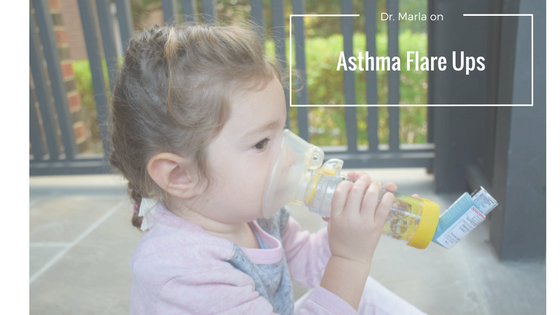Everyone at this time of year is in back-to-school mode, including us doctors. While the house might be quieter during the day, I can tell you that both my office and emergency rooms across the country reflect what has come to be known as the “Week 38 Phenomenon.”

Research has shown that hospitals see a sudden spike in emergency room visits for both children and adults who suffer from asthma in mid-September and the beginning of October, just where we are right now in the calendar, sees this flurry in flares. Why? There are a number of reasons why. Among them, viral respiratory infections begin to rise and kids in close contact at school spread these viral infections from one to another… then kids bring the infections home to their adults. In addition, there are also allergens in the air and children are exposed to children who may bring allergens on their clothing from home, such as cat allergen, dog allergen and the like.
Asthma affects millions of kids and many do not have control of their asthma. It is the number one emergency room visit for kids. About 25 percent of all children’s asthma hospitalizations are known to occur in the five week period after kids go back to school. Often over the summer, kids can become complacent about taking their asthma medication. Couple that with close crowding, virus transmission and allergens to create what many have called the perfect storm for an asthma flare.
What is asthma?
Asthma is a two-component disease. Many of the symptoms of cough, wheezing and shortness of breath are caused by narrowing or constriction of the bronchial breathing tubes that happens when the muscles around the airways becomes tight. Then, the airway lining can become swollen and inflamed leading to mucous production. This too narrows the airway.
Asthma triggers include air pollution pollen, certain foods, spray-on deodorants, perfumes, dust, exercise, tobacco, smoke, mold and pets.
Some of the signs that asthma is flaring includes the need of more reliever medication, a cough, nausea or light headedness, and difficulty in sleeping. The 30-second asthma test can identify whether or not you might be having a flare. This is a test developed by GSK that has been validated.
I think my child is having an asthma flare-up
Treatment of asthma is designed to reduce the inflammation on an ongoing basis with the use of inhaled steroid medication. This preventive medication is critical to ongoing control of asthma. Dilators can be long acting or short acting. There are many medications on the market to control asthma.
As a parent, it is important to make sure your child is taking their medication regularly. Often when a child feels better, they stop taking the medication. Your child’s teacher should be informed about management of asthma for your child including the use of rescue medication should they have a flare. Make sure you talk to your child about the importance of hand washing. Education for all is important.
Dr. Marla Shapiro is a family doctor and a specialist in preventive medicine and community health. Don’t miss her tips on how to prevent your kids from getting the common skin condition, molluscum contagiosum.







